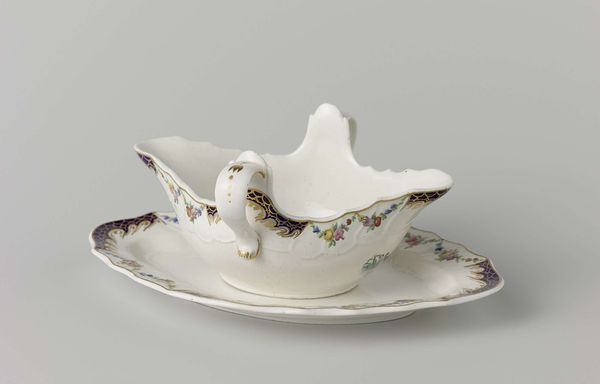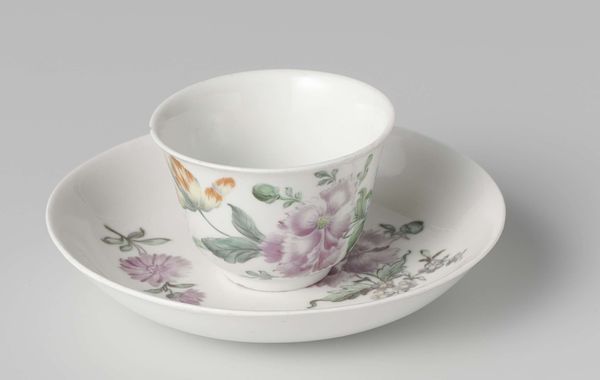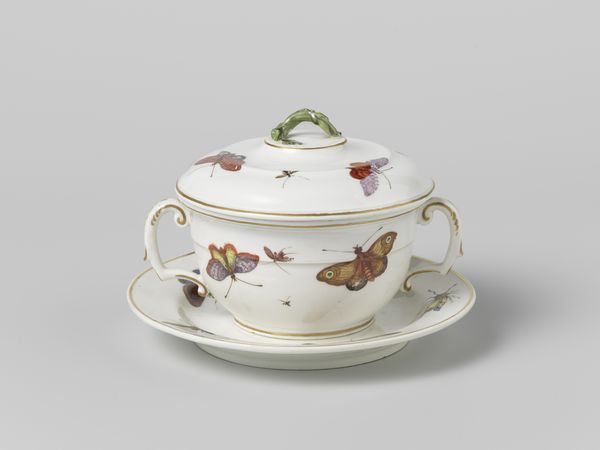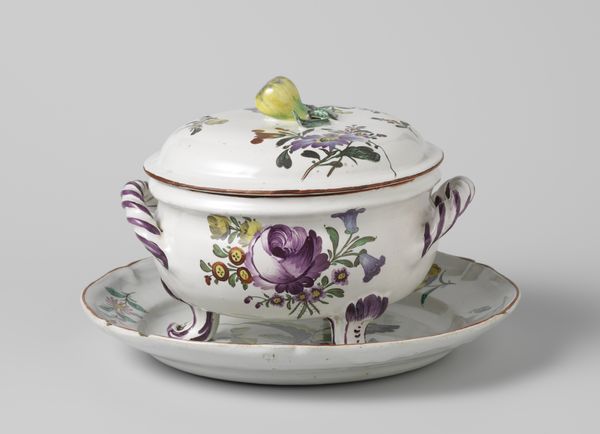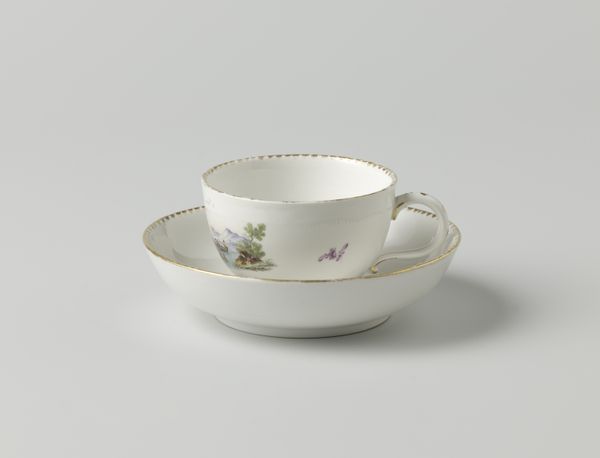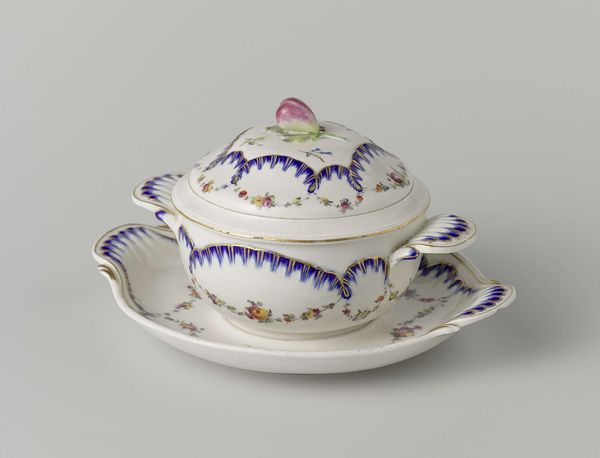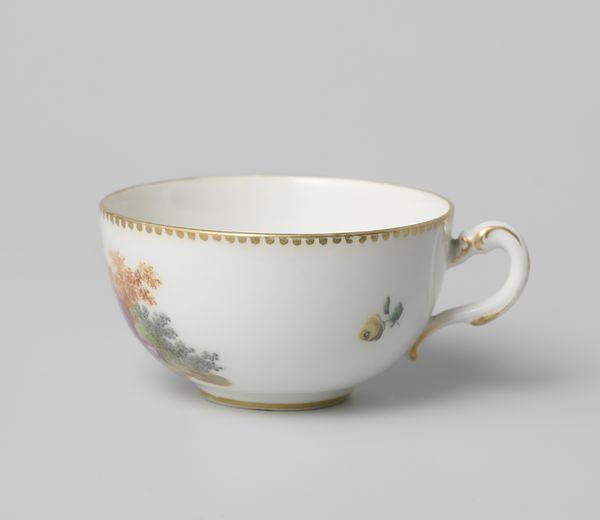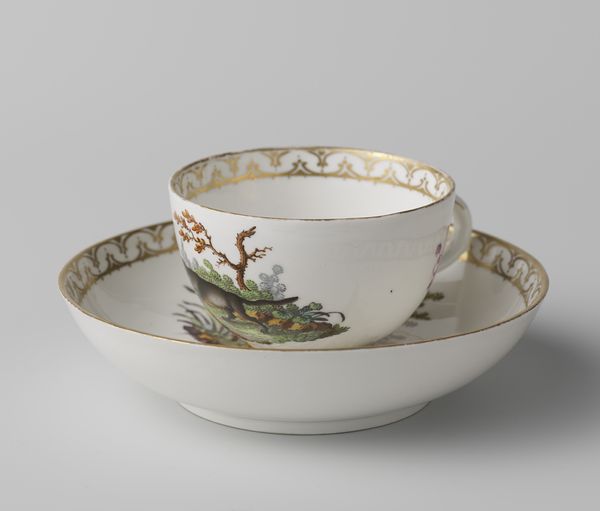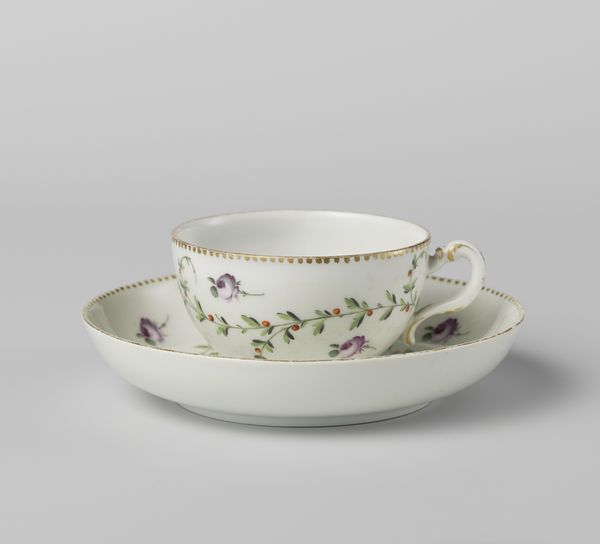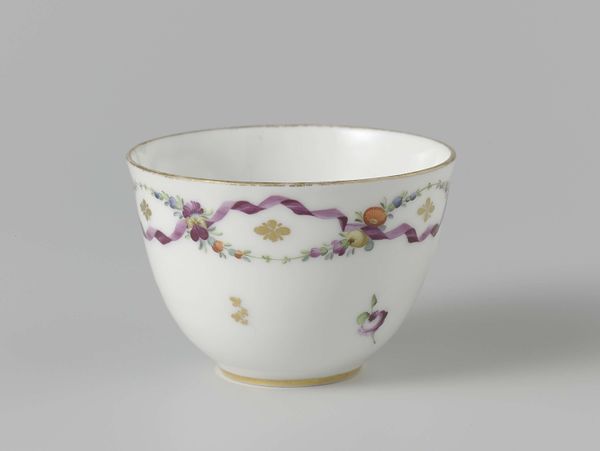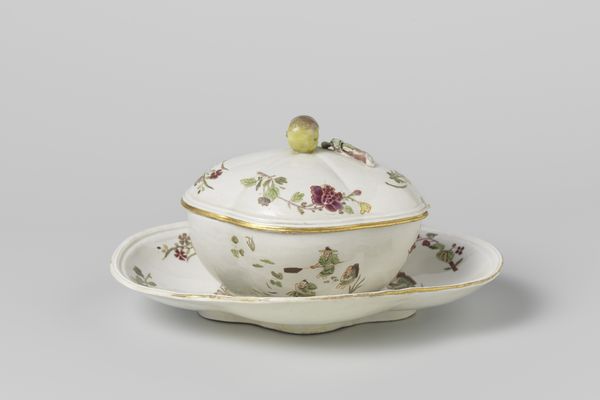
painting, ceramic, porcelain
#
painting
#
asian-art
#
ceramic
#
porcelain
#
orientalism
#
ceramic
#
decorative-art
Copyright: Rijks Museum: Open Domain
Curator: The item before us, dating from approximately 1765 to 1770, is a delicate cup and saucer crafted from porcelain by the Weesper porseleinfabriek. What strikes you most about it initially? Editor: Immediately, it evokes a sense of longing, perhaps for a simpler time or a faraway place. The hand-painted decoration, though quite simple, is what attracts my eye the most and what feels very unique about it. Curator: Absolutely. Its creation coincided with the rise of the Dutch East India Company and the widespread fascination with the "Orient" – it's a prime example of Orientalism in decorative arts. These pieces were more than mere tableware; they were signifiers of wealth, taste, and engagement with global trade networks. Editor: Right. But it’s impossible to look at it without acknowledging the uneven power dynamics at play. This cup and saucer, intended for a Western consumer, presents a romanticized, potentially skewed vision of Asian culture and aesthetics. It reflects a specific desire and colonial gaze from that era. How might we read this artwork through a postcolonial lens, examining its contribution to the construction of the "Orient" as an object of Western fantasy and consumption? Curator: That’s key. And we should question the historical reception of this cup and saucer – who was buying it? In what spaces was it displayed? How did it contribute to the era’s discourses on global trade, colonialism, and artistic appropriation? It’s such a compelling artifact. Editor: Yes. Seeing its imagery raises complex issues about cross-cultural representation, historical context, and the problematic ways other cultures were perceived through an aesthetic lens. It shows how everyday objects like this carried colonial weight. The study of such items can contribute significantly to dialogues around social consciousness. Curator: Precisely. Examining these works allows us to interrogate not only the art itself but also the historical circumstances that birthed it and the values they perpetuated. Editor: Indeed. Ultimately, analyzing "Cup and Saucer" urges a crucial discussion regarding the intersection of power, representation, and global exchange, compelling us to consider how we perceive cultural artifacts of the past.

